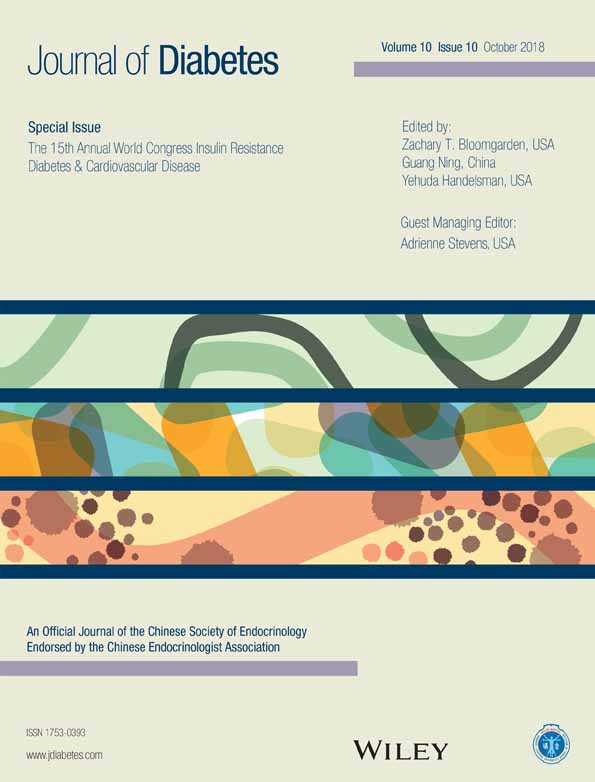World congress on insulin resistance, diabetes and cardiovascular disease
胰岛素抵抗、糖尿病以及心血管疾病世界大会
Box 1 A brief history of our understanding of insulin resistance
- Berson and Yalow: Discovery of the principles of radioimmunoassay, finding that type 2 diabetes mellitus is associated with hyperinsulinemia,1 beginning around 1960.
- Jesse Roth: The insulin receptor and insulin action,2 beginning around 1970.
- Understanding of “post-receptor” factors contributing to insulin resistance.3
- Concept of impairment in metabolic insulin action, leading to hyperinsulinemia with consequent excess mitogenic insulin effect in states of insulin resistance.4
- Gerald Reaven, who was a founder of the Congress and passed away on 12 February 2018, first described “Syndrome X,” suggesting in 1988 that insulin resistance is its main pathophysiology.5
- In 2003 and 2004, Gerald Reaven called Syndrome X the “Insulin Resistance Syndrome”.6, 7
Diabetes prevention and control, lipid, cardiovascular, cerebrovascular, renal, liver, and reproductive function, and a host of other conditions reflect the yin and yang of insulin resistance and insulin action, with benefits of caloric restriction, exercise, thiazolidinediones, and many other therapeutic approaches best understood in the context of insulin resistance. Over more than a decade, the World Congress on Insulin Resistance, Diabetes, and Cardiovascular Disease has been at the forefront of our understanding of the myriad faces of insulin resistance in clinical medicine. The current issue of the Journal of Diabetes includes a series of commentaries based on presentations given during the 13th annual meeting of the World Congress in December 2017, reflecting current trends around the central role of insulin resistance in our understanding of related medical conditions and diseases.
Paul Zimmet and George Alberti give important considerations to be used in the clinical diagnosis of diabetes,8 and Richard Bergman and colleagues describe a physiologic approach to understanding various aspects of insulin signaling and insulin clearance in diabetes.9 David Jacobs and Tian Hu describe a specific approach to categorizing dietary patterns of relevance to the development of diabetes and its effect on insulin resistance-related chronic diseases.10 Of major clinical importance, and increasingly addressed at the World Congress, have been multiple complex aspects of cardiovascular disease. Peter Grant touches on aspects of hypercoagulability in diabetes,11 whereas Sergio Fazio and Michael Shapiro touch on an understanding of approaches to the treatment of related dyslipidemia.12 Richard Pratley describes some of the important cardiovascular safety trials of novel therapeutic agents for diabetes, which suggest that certain approaches may convey specific cardiovascular outcome benefits.13 Finally, Robert Chilton14 and Mark Kearney,15 in two contributions, discuss an aspect of cardiovascular disease that has increasingly been seen as important in insulin-resistant states: congestive heart failure. New understandings and treatments of congestive heart failure have emerged as analysis of the safety trials has proceeded.
Paraphrasing Sir William Osler, and moving a century ahead, we may justifiably claim that one “who knows insulin resistance knows medicine”. The small glimpse into the discussions of the World Congress gives a beginning of this understanding.
“阴”与“阳”这两个汉字的并列, 是代表月亮与太阳的表意文字, 这也是我们对大部分交互作用下的回应以及周期性规律的基本认识。在疾病的发展过程中有关胰岛素抵抗的影响尤其引人注目。在历史上我们对胰岛素抵抗的认识有过多次重大发现, 这些研究结果使得我们目前针对肥胖症、糖尿病、动脉粥样硬化症以及一系列代谢及相关疾病状态的治疗方法日益丰富(Box 1)。
Box 1 我们对胰岛素抵抗的认知简史
- Berson与Yalow:大约在1960年, 提出了放射免疫分析法的原理, 发现2型糖尿病与高胰岛素血症相关1。
- Jesse Roth:大约在1970年, 发现了胰岛素受体以及胰岛素的作用2。
- 认识到了胰岛素抵抗的“受体后”因素3。
- 提出了胰岛素代谢作用减弱的概念, 它可导致高胰岛素血症, 随后在胰岛素抵抗状态下胰岛素会产生过度的促有丝分裂效应4。
- Gerald Reaven于2018年2月12日去世, 是他首先描述了“X综合征”。他于1988年提出了2型糖尿病的主要病理生理学特征是胰岛素抵抗5。
- 在2003年与2004年, Gerald Reaven将X综合征称为“胰岛素抵抗综合征6,7”。
糖尿病的预防与控制, 血脂、心血管、脑血管、肾脏、肝脏、生殖功能以及许多其他健康状况都反映了胰岛素抵抗与胰岛素作用的阴与阳, 并且在胰岛素抵抗的背景下更加能够理解限制热卡摄入、体格锻炼、使用噻唑烷二酮类药物以及许多其他治疗方法的益处。十多年以来, 在临床医学中, 胰岛素抵抗、糖尿病以及心血管疾病世界大会一直是我们了解胰岛素抵抗知识的前沿阵地。当前这期Journal of Diabetes杂志收录了一系列针对2017年12月召开的第13届世界年会期间发表论文的评论, 反映了当前以胰岛素抵抗为中心的趋势, 有助于我们了解相关的医疗状况与疾病。
Paul Zimmet与George Alberti提出在糖尿病的临床诊断中许多重要考虑的因素,Richard Bergman与他的同事一起描述了一种用来理解糖尿病患者胰岛素信号传导以及胰岛素清除各个方面状况的生理学方法9。针对与糖尿病进展相关的饮食模式,David Jacobs和Tian Hu描述了一种特定的膳食模式与糖尿病发展相关的分类方法及其对胰岛素抵抗相关的慢性疾病影响10。心血管疾病的多个复杂方面具有重要临床意义, 在世界大会上已经受到越来越多的关注。
Peter Grant针对糖尿病高凝状态方面进行了探讨11,而Sergio Fazio与Michael Shapiro针对血脂异常相关的治疗方法的理解进行了探讨12。Richard Pratley介绍了一些重要的与新的糖尿病治疗药物相关的心血管安全性试验, 结果表明某些治疗方法可以获得特别有益的心血管结果13。最后,Robert Chilton14与Mark Kearney15分别在两篇文献中讨论了心血管疾病的另一方面:充血性心力衰竭作为胰岛素抵抗状态的重要组成部分, 其发生率越来越高。随着对安全性试验结果分析的深入, 目前对充血性心力衰竭已有新的认识与治疗方法。
转述百年前William Osler爵士说过的一句话, 现在我们可以理直气壮地说:“谁能够了解胰岛素抵抗谁就懂得治疗”。本次世界大会的讨论内容虽然不能涵盖所有, 但这却是我们理解胰岛素抵抗的开始。




